History of OPT
History of Oak Park Temple
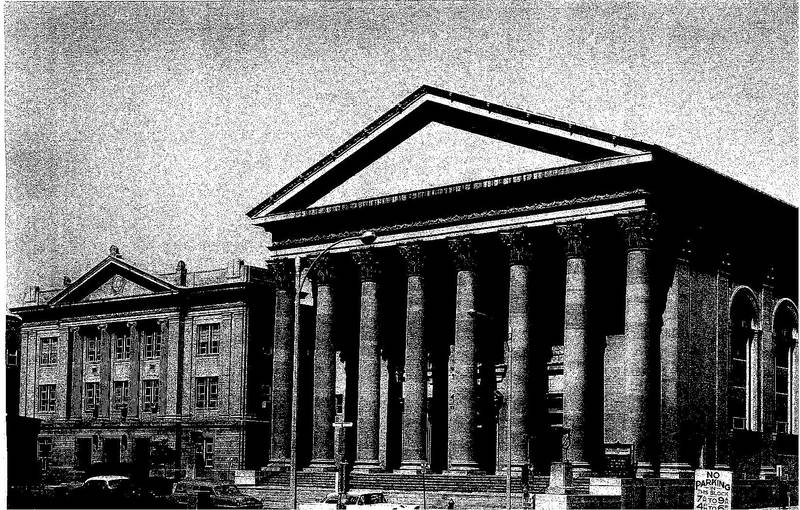 Oak Park Temple began its history as the product of a merger between two congregations on Chicago’s West Side: Zion Congregation, founded in 1864 by Rabbi Bernhard Felsenthal, an immigrant and leader in the burgeoning Reform movement in the U.S., and B’nai Abraham Congregation, originally an Orthodox shul on the southwest side established in 1873. Zion initially held services in a rented Baptist Church until its first building was erected on Des Plaines Street between Madison and Washington Streets. Zion was one of only two synagogues in Chicago to escape the Great Chicago Fire of 1871. B’nai Abraham was formed from ad hoc minyans that in the beginning gathered in various rented halls and churches. The transformation from an Orthodox to a Reform congregation was underway at least by early 1878 when the synagogue purchased a small organ from another congregation. At the time, Zion Congregation and B’nai Abraham Congregation were the only two synagogues west of the Chicago River.
Oak Park Temple began its history as the product of a merger between two congregations on Chicago’s West Side: Zion Congregation, founded in 1864 by Rabbi Bernhard Felsenthal, an immigrant and leader in the burgeoning Reform movement in the U.S., and B’nai Abraham Congregation, originally an Orthodox shul on the southwest side established in 1873. Zion initially held services in a rented Baptist Church until its first building was erected on Des Plaines Street between Madison and Washington Streets. Zion was one of only two synagogues in Chicago to escape the Great Chicago Fire of 1871. B’nai Abraham was formed from ad hoc minyans that in the beginning gathered in various rented halls and churches. The transformation from an Orthodox to a Reform congregation was underway at least by early 1878 when the synagogue purchased a small organ from another congregation. At the time, Zion Congregation and B’nai Abraham Congregation were the only two synagogues west of the Chicago River.
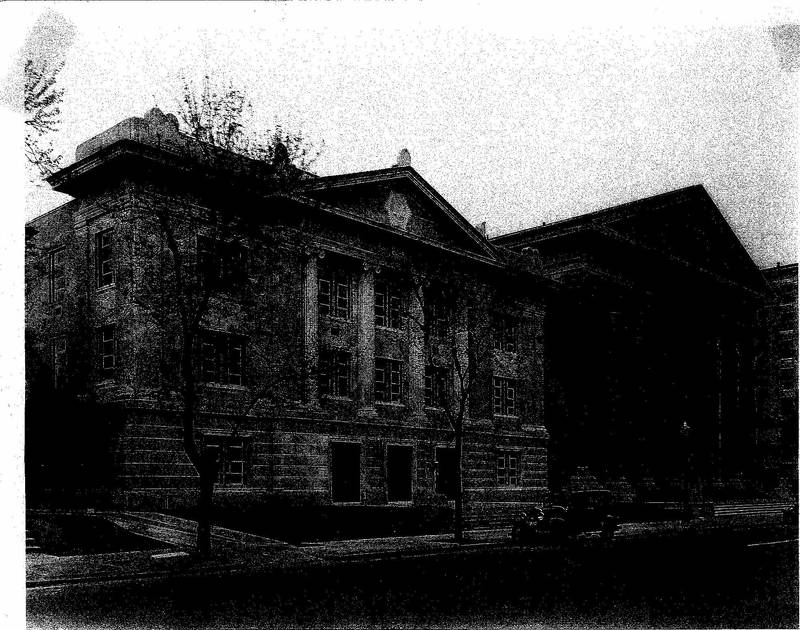 For almost fifty years, B’nai Abraham and Zion, both with growing memberships and influenced by the inexorable movement of their members west, made several roughly parallel moves into larger and larger buildings on the West Side. In 1918, B’nai Abraham purchased a lot at the corner of Washington Boulevard and Karlov Avenue and began making plans to erect a new synagogue on that site. In the midst of planning, a merger of the two congregations was proposed. Just who first proposed the merger is unknown but B’nai Abraham member Charles Benesch was one of its foremost proponents. The exact rationale underlying the merger proposal has been lost through time but it seems likely that B’nai Abraham planning ran into fund-raising realities. B’nai Abraham leaders may have seen the merger as an opportunity to raise the necessary funds for construction of the new building while saving money by operating one synagogue instead of two.
For almost fifty years, B’nai Abraham and Zion, both with growing memberships and influenced by the inexorable movement of their members west, made several roughly parallel moves into larger and larger buildings on the West Side. In 1918, B’nai Abraham purchased a lot at the corner of Washington Boulevard and Karlov Avenue and began making plans to erect a new synagogue on that site. In the midst of planning, a merger of the two congregations was proposed. Just who first proposed the merger is unknown but B’nai Abraham member Charles Benesch was one of its foremost proponents. The exact rationale underlying the merger proposal has been lost through time but it seems likely that B’nai Abraham planning ran into fund-raising realities. B’nai Abraham leaders may have seen the merger as an opportunity to raise the necessary funds for construction of the new building while saving money by operating one synagogue instead of two.
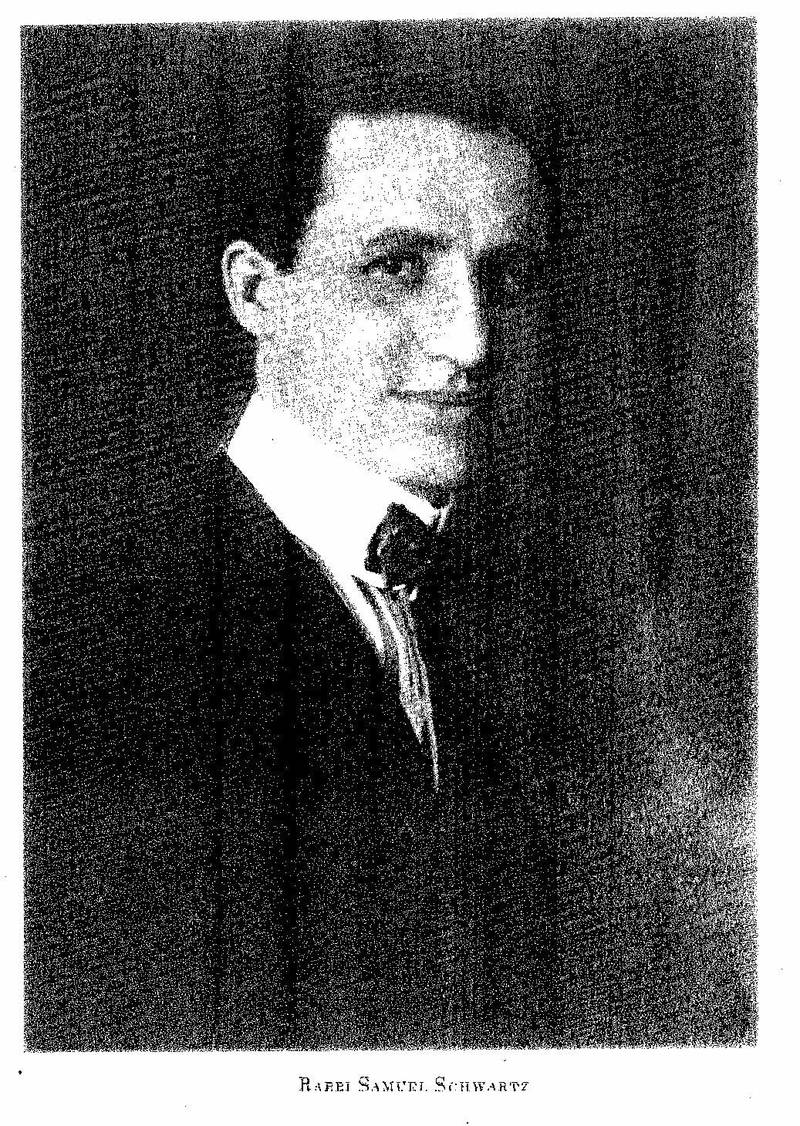 The two congregations merged in 1919 marked by a celebratory service on April 25th. The first rabbi of the newly merged Congregation B’nai Abraham Zion was Max Merritt, but his relationship with the members was not a happy one and before construction of the new building started, he left to take a position in Montreal. In the summer of 1920, Rabbi Samuel Schwartz was recommended to Henry Lurie, the congregation’s financial secretary and apparently its “voice,” seemingly a one-man selection committee. Rabbi Schwartz was asked to officiate at High Holy Days services. He did well at this “tryout” and promptly accepted an offer to become the Congregation’s rabbi.
The two congregations merged in 1919 marked by a celebratory service on April 25th. The first rabbi of the newly merged Congregation B’nai Abraham Zion was Max Merritt, but his relationship with the members was not a happy one and before construction of the new building started, he left to take a position in Montreal. In the summer of 1920, Rabbi Samuel Schwartz was recommended to Henry Lurie, the congregation’s financial secretary and apparently its “voice,” seemingly a one-man selection committee. Rabbi Schwartz was asked to officiate at High Holy Days services. He did well at this “tryout” and promptly accepted an offer to become the Congregation’s rabbi.
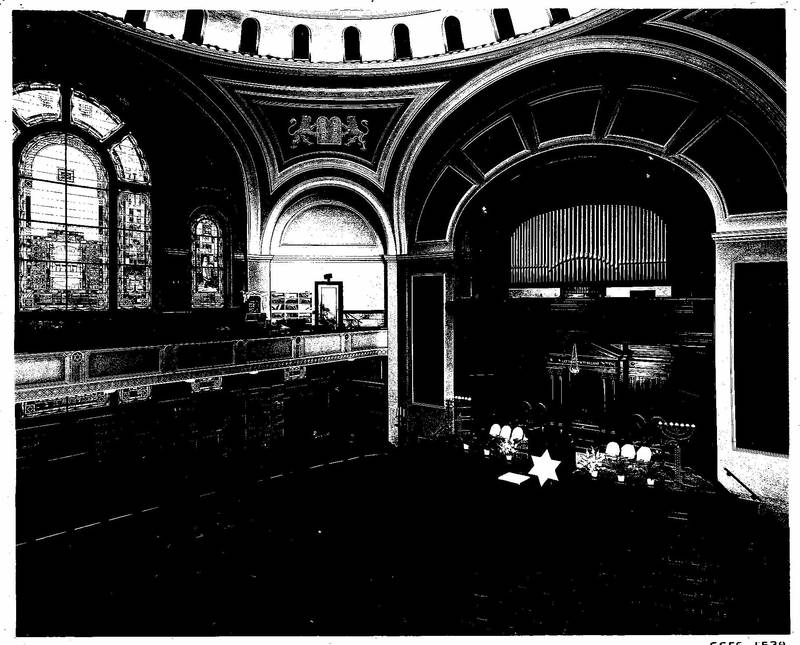 When he arrived in Chicago, Rabbi Schwartz expected to find the new synagogue building in an advanced stage of construction. Instead, what he found was a heap of building materials on a vacant lot. He learned that, “(t)he membership of the B’nai Abraham branch was entirely of Bohemian background, and that of Zion a mixture of East European and German. The Bohemians were in control numerically and financially and they demonstrated it and were proud of it,” Schwartz wrote in his autobiography.
When he arrived in Chicago, Rabbi Schwartz expected to find the new synagogue building in an advanced stage of construction. Instead, what he found was a heap of building materials on a vacant lot. He learned that, “(t)he membership of the B’nai Abraham branch was entirely of Bohemian background, and that of Zion a mixture of East European and German. The Bohemians were in control numerically and financially and they demonstrated it and were proud of it,” Schwartz wrote in his autobiography.
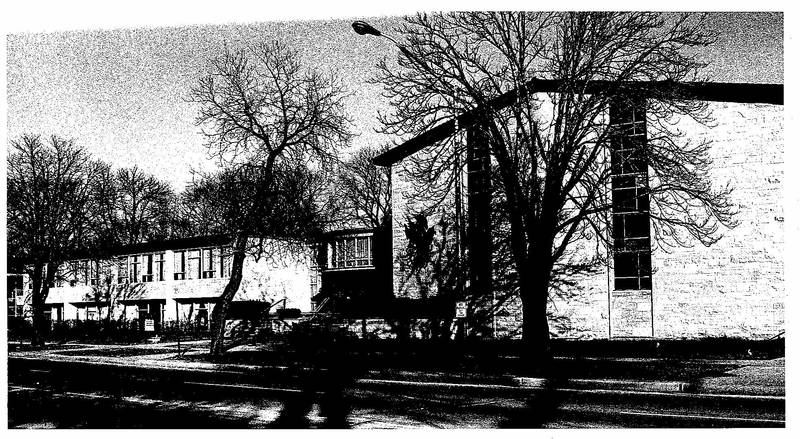 Given the tensions at the time, one might have predicted that the two factions would never work things out, leading to dissolution of the merged congregation. But the problems eventually subsided thanks to the loving tenacity of Rabbi Schwartz and his wife Charlotte along with a group of dedicated and visionary leaders, who were determined to keep the congregation together. As the new building (really two buildings, the first to be built was to be used for a community hall, offices, and classrooms and the second for the sanctuary) was being built, the congregation had about 175 to 200 members and a very small Sunday School. There were only two teachers and Rabbi Schwartz considered the congregation to be somewhat “neglected.” With the community hall building to be constructed first, the congregation moved into temporary quarters in a nearby church.
Given the tensions at the time, one might have predicted that the two factions would never work things out, leading to dissolution of the merged congregation. But the problems eventually subsided thanks to the loving tenacity of Rabbi Schwartz and his wife Charlotte along with a group of dedicated and visionary leaders, who were determined to keep the congregation together. As the new building (really two buildings, the first to be built was to be used for a community hall, offices, and classrooms and the second for the sanctuary) was being built, the congregation had about 175 to 200 members and a very small Sunday School. There were only two teachers and Rabbi Schwartz considered the congregation to be somewhat “neglected.” With the community hall building to be constructed first, the congregation moved into temporary quarters in a nearby church.
Construction of the buildings progressed slowly with delays caused by labor problems, material shortages, and, even after the merger, insufficient funds. A building containing a community hall, the first ten Sunday School rooms, an office, and a rabbi’s study was completed and dedicated on November 12, 1920. Two days later, the cornerstone for the sanctuary building was laid. During construction of the second building, services were held in the community hall and the congregation was named Washington Boulevard Temple of B’nai Abraham Zion.
Rabbi Schwartz himself planned many of the construction details for the sanctuary, including the pulpit, the pews, designs and themes for the stained glass windows, and the menorah. He emphasized Jewish content in his sermons, shying away from politics and other secular topics. Dedication ceremonies for the newly constructed sanctuary building began on September 23, 1921. Settled into its new home, the congregation grew in numbers, the Sisterhood thrived, a youth group was formed, a library was added, and the Sunday school swelled to nearly 500 pupils. Practically every space in the community hall and temple was used for classrooms.
The congregation was “substantial but not rich.” No one was paid “generously.” but Rabbi Schwartz’s discretionary funds were used to supplement the salaries of teachers and other staff. During the Great Depression, teachers and staff often had to wait months for their salaries although when funds were available, Rabbi Schwartz always insisted that the teachers be paid first.
In 1939 the Temple hired Rabbi W. Gunther Plaut, a new graduate of the Hebrew Union College, as its assistant rabbi. During World War II, Rabbi Plaut became an Army chaplain, leaving Rabbi Schwartz to carry on alone. Upon Plaut’s return he was made the associate rabbi and in September, 1946, he was chosen as rabbi, Rabbi Schwartz assuming emeritus status. In 1949, Rabbi Plaut, who had also edited the book “The Torah: A Modern Commentary,” left to take a new position in St. Paul, Minnesota, and Rabbi Schwartz stepped in as interim rabbi. With some dispatch the congregation chose Rabbi Wendell Phillips as its new spiritual leader. His tenure was a short and rather unhappy one. He left in 1951 and again Rabbi Schwartz returned as interim rabbi.
Rabbi Leonard J. Mervis arrived later in 1951 and stayed 28 years until he retired in 1979. During the 1950’s, the Jewish community of the West Side began to disperse as part of the area’s racial and economic change, with many members of Washington Boulevard Temple moving to Austin and the Western suburbs. With plans to relocate in the preliminary stages, the congregation established satellite religious schools in the Oak Park area. Sunday School classes met at Holmes School for about a year and then at Mann School until the new building opened. Hebrew School was held at Galewood Congregational Community Church and the Temple Nursery was housed for a while at Elmwood Park Presbyterian Church.
Fearing opposition within Oak Park concerning its intensions to move, the congregation used a “straw man” buyer to hide its plans until after the land was purchased. Ground for the new building was broken on April 24, 1955 and the cornerstone was laid on June 24, 1956. An underground river discovered under the building site that kept the excavation flooded caused the extended delay between the ground breaking and the laying of the cornerstone. The same river caused similar problems years later in 2000 when the new addition to the current building was constructed.
The first services at the present synagogue were held for Rosh Hashana in 1957. When the congregation moved to Oak Park, its membership quickly swelled. As the only Reform Temple in the Western suburbs, it drew members from the city and from as far away as Geneva and St. Charles. Within a couple of years, membership grew so quickly that double services were held on the High Holidays. Sunday School classes were held throughout the building, including the choir loft, the youth lounge with multiple classes, the south lobby, and even in the basement passageway under the community hall. The Mens’ Club sponsored a Sunday morning bowling league, as much to clear people out of the building, thereby making more room available for students and teachers, as for the camaraderie.
Rabbi Mervis used the pulpit to bring focus and insight to the complex social issues of the time. His sermons dealing with the Civil Rights Movement, the war in Viet Nam, combating poverty, and other such issues were thought provoking and helped keep the congregation focused on social action issues. In 1979, Rabbi Gary S. Gerson replaced Rabbi Mervis, who stayed on with emeritus status. Under Rabbi Gerson’s guidance, several major changes. The adult education program expanded significantly. In the early 1980’s the Temple’s first Torah study group was formed. Over the years, three more such groups were established. Increasing numbers of adults began to study Hebrew. Temple members began participating more extensively in religious services, reading Torah, and delivering D’vrai Torah. The Glasser Preschool program was expanded and a summer day camp for children was started.
Temple services became more traditional and at the same time more egalitarian. Gender-sensitive prayers and ultimately gender-sensitive prayer books were introduced. Many prayers and songs previously done in English were changed to Hebrew. Kipot became commonplace and many, both men and women, chose to wear tallitot. Women and men played equal roles in religious services and in the life of the Temple generally. The Sisterhood adapted to reflect the changing roles of women in society, while continuing in its support, financial and otherwise, of many Temple activities. In 1989, 125 years after the founding of Zion Congregation, Ilene Bass became the congregation’s first woman president. Cantors Alane Katzew and later Julie Yugend-Green have emphasized greater congregational participation in the Temple’s musical life.
Diversity is a hallmark of the congregation. Recognizing that many Jews in the area served by the Temple are in religiously mixed marriages, the congregation set out to deepen its contacts within the surrounding Jewish community. Through Outreach activities, the Temple has sought to help such couples address the particular needs and conflicts found in interfaith marriages. Lesbian and gay members also are an important and much-welcomed part of our community.
In 2000, the construction of the new wing, which has resulted in additional rooms for adult education, meetings and youth activities, improved office space, and a larger library and gift shop, was completed. And since the recent renovations the synagogue is now completely accessible to those with disabilities. In 2009, Rabbi Gary Gerson was elevated to the role of Rabbi Emeritus, and Rabbi Max Weiss joined the Temple, initiating a period of increased community and social action.
In 2014-2015, Oak Park Temple celebrated 150 years of serving Jews in the Chicago area, with a series of celebrations, lectures and events, including popular Israeli guitarist David Broza. Ever true to its core values as an affirming, caring congregation, Oak Park Temple takes great pride in providing a warm and welcoming community for all.
The Rabbis of Oak Park Temple
ZION CONGREGATION OF WEST CHICAGO
Dr. Bernhard Felsenthal 1864-1881
Dr. Max Heller (Associate) 1884-1886
Dr. Joseph Stolz 1887-1896
Rabbi Emil G. Hirsch 1896-1898
Rabbi Joseph K. Arnold 1896-1900
Rabbi Jacob S. Jacobson 1900-1908
Rabbi Israel Klein 1908-1913
Rabbi Samuel S. Cohon 1913-1919
B’NAI ABRAHAM CONGREGATION
Rev. Aaron Janko 1873-1878
Rev. Isaac Fall 1878-1880
Dr. Ignatz Grossman 1880-1885
Rev. Jacobson 1885-1888
Rev. Abraham R. Levy 1888-1910
Rabbi Morris Ungerleider 1910-1919
B’NAI ABRAHAM ZION
Rabbi Max Merritt 1919-1920
Rabbi Samuel Schwartz 1920-1945
Rabbi Gunther Plaut (Asst.) 1939-1945
Rabbi Gunther Plaut 1945-1949
Rabbi Samuel Schwartz (Interim) 1949
Rabbi Wendell Phillips 1949-1951
Rabbi Samuel Schwartz (Interim) 1951
Rabbi Leonard J. Mervis 1951-1979
Rabbi Gary S. Gerson 1979-2009
Rabbi Max Weiss 2009-
Rabbi Daniel Kirzane 2018 -2024
Sun, October 26 2025
4 Cheshvan 5786
Today's Calendar
: 8:30am |
: 9:30am |
: 10:30am |
: 4:30pm |
Friday Night
| Candle Lighting : 5:29pm |
: 8:00pm |
Shabbat Day
: 10:00am |
| Havdalah : 6:36pm |
Upcoming Events
Oct 26 |
Oct 26 |
Oct 26 |
Oct 26 |
Oct 27 |
This week's Torah portion is Parashat Lech L'cha
| Shabbat, Nov 1 |
Candle Lighting
| Friday, Oct 31, 5:29pm |
Havdalah
| Motzei Shabbat, Nov 1, 6:36pm |
Erev Hanukkah
| Sunday, Dec 14 |
Join Our Mailing List
Oak Park Temple
Oak Park Temple B’nai Abraham Zion is a reform Jewish congregation. We are committed to continually creating a warm, welcoming and diverse community, centered around Jewish worship, family, and lifelong learning. We promote the rights and well-being of Israel and all humanity.
Oak Park Temple is a 501(c)(3) organization. EIN#36-2287537
Oak Park Temple is a member of The Union for Reform Judaism (URJ). This website conforms to the privacy policy set forth by the URJ.
Contact Oak Park Temple
1235 N. Harlem Ave., Oak Park, IL 60302 / 708-386-3937
Privacy Settings | Privacy Policy | Member Terms
©2025 All rights reserved. Find out more about ShulCloud
